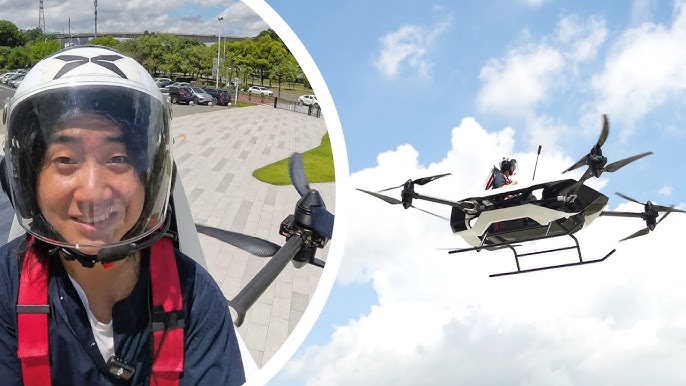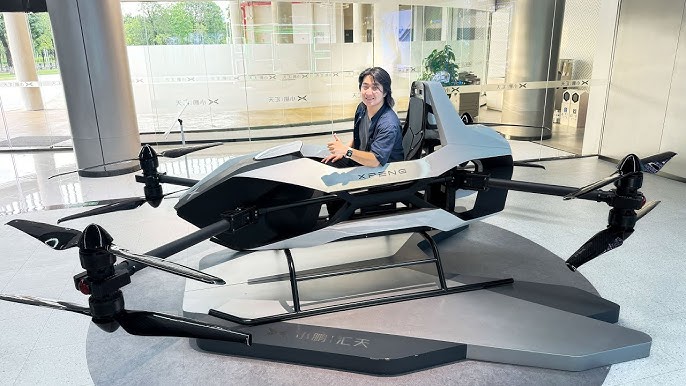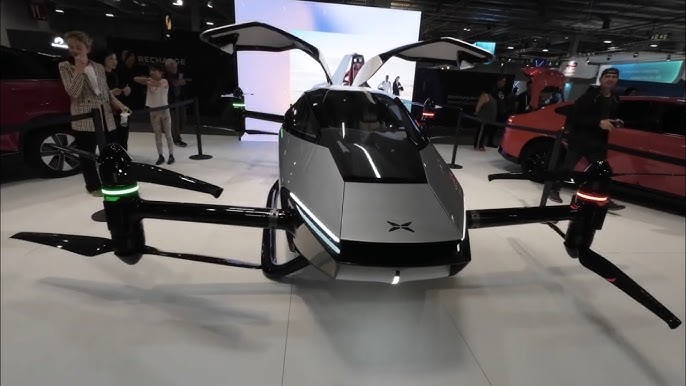Home Uncategorized US First Flying Cars STUNNED Chinese Engineers at CES 2025 – naruto US First Flying Cars STUNNED Chinese Engineers at CES 2025 – naruto
The Consumer Electronics Show (CES) 2025 has become a pivotal event in the realm of technology, showcasing groundbreaking innovations that promise to redefine the future. This year, the spotlight was on the unveiling of the United States’ first fully operational flying car, which left Chinese engineers and attendees in awe. This remarkable development not only highlights American ingenuity but also marks a significant shift in the competitive landscape of the global automotive and aerospace industries.
The flying car, dubbed the AeroX, developed by a consortium of American tech companies, combines cutting-edge engineering with sleek design. With its vertical takeoff and landing (VTOL) capabilities, the AeroX is designed to navigate the challenges of urban environments. It boasts an impressive range of 100 miles on a single charge and can reach speeds of up to 150 miles per hour, making it a practical solution for commuters seeking to escape the frustrations of ground traffic. The vehicle’s autonomous flying system, equipped with advanced sensors and artificial intelligence, ensures a safe and seamless flying experience for passengers.
At CES 2025, the AeroX was showcased in a dramatic flight demonstration that captivated the audience. As it soared gracefully above the convention center, attendees marveled at its agility and responsiveness. The demonstration highlighted the vehicle’s ability to avoid obstacles and navigate complex airspace, leaving many Chinese engineers impressed and eager to understand the technology behind this innovation. The excitement surrounding the AeroX reflects a growing trend in the transportation industry, where flying cars are no longer just a concept but a tangible reality.
The implications of the AeroX extend far beyond its technical specifications. As urban populations continue to grow, cities face increasing challenges related to traffic congestion and pollution. The introduction of flying cars like the AeroX presents a viable solution to these issues. By taking to the skies, commuters can bypass gridlock and reduce their carbon footprint, contributing to a more sustainable future. This potential for positive impact on urban mobility has sparked interest from city planners and policymakers worldwide, eager to explore how flying cars can be integrated into existing transportation networks.
Moreover, the unveiling of the AeroX at CES 2025 has intensified the competition between the United States and China in the field of advanced transportation technologies. Chinese engineers, who have been actively working on their own flying car prototypes, were notably impressed by the AeroX’s capabilities and the rapid pace of its development. This competition is likely to drive further innovation and investment in both countries, as each seeks to establish itself as a leader in the emerging market for flying vehicles.
However, the introduction of flying cars raises important questions regarding safety and regulation. The integration of flying vehicles into crowded urban airspace will require comprehensive regulatory frameworks to ensure public safety and effective air traffic management. The United States, with its established aviation regulations, may have a head start in addressing these challenges. Still, the rapid pace of technological advancement necessitates ongoing collaboration between industry stakeholders and government agencies to create a safe and efficient airspace for flying cars.
Public perception also plays a crucial role in the adoption of flying cars. While many individuals are excited about the prospect of airborne commuting, concerns about safety, noise, and cost remain prevalent. Education and outreach will be essential in building trust among potential users and ensuring that flying cars become an accepted mode of transportation.
In conclusion, the unveiling of the AeroX at CES 2025 marks a significant milestone in the evolution of urban mobility. The stunned reactions of Chinese engineers highlight the competitive landscape of flying car technology and the potential for transformative change in transportation. As the United States and China continue to innovate and push the boundaries of what is possible, the future of flying cars looks promising. This new era of transportation could redefine how we navigate our cities, making commuting faster, more efficient, and more sustainable than ever before.








.jpeg)
Comments
Post a Comment